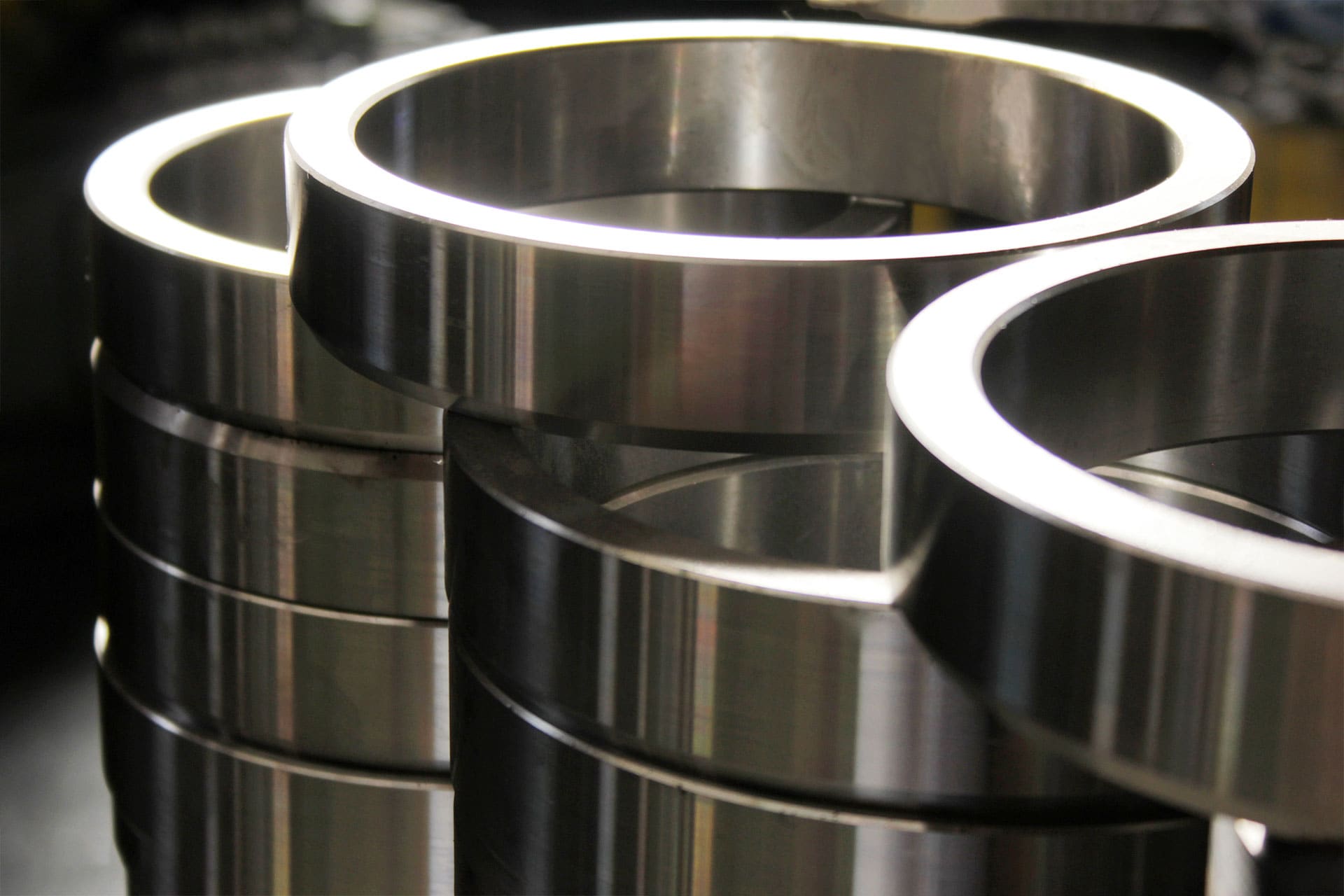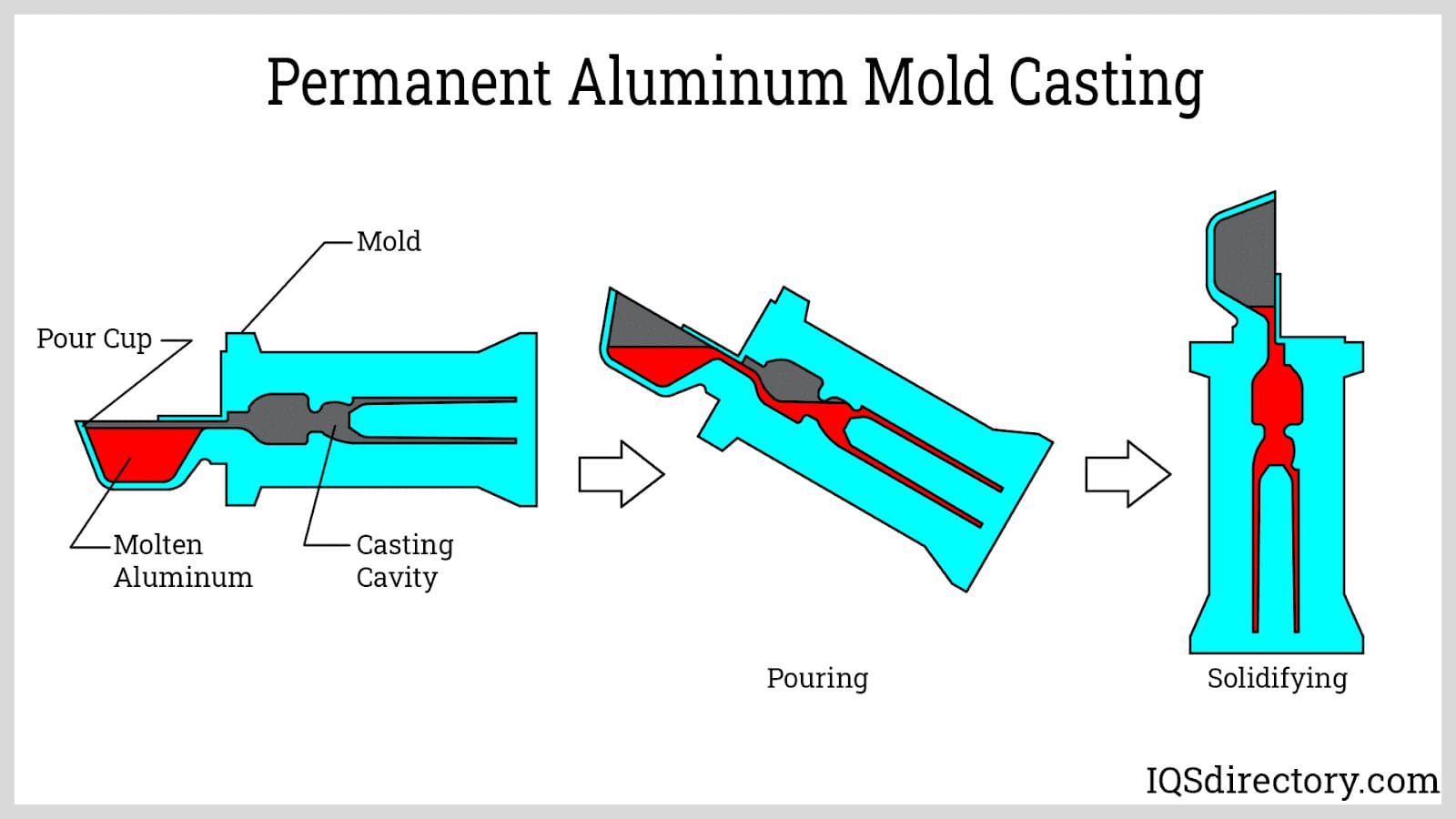Discovering the Versatile Makes Use Of and Applications of Aluminum Castings in Modern Industries
Light weight aluminum castings have become indispensable to various contemporary markets as a result of their unique properties. They use substantial benefits in weight reduction, thermal conductivity, and corrosion resistance. From automobile developments to applications in consumer products and construction, their adaptability is exceptional. Yet, real degree of their impact prolongs past instant benefits, meaning wider ramifications for sustainability and efficiency. What lies in advance for light weight aluminum castings in an ever-evolving commercial landscape?
Automotive Market Innovations
The automotive sector has actually progressively embraced light weight aluminum castings to enhance automobile performance and efficiency. By using light weight aluminum, producers can create lighter components, which add to enhanced gas economic climate and reduced emissions. Key applications consist of engine blocks, transmission instances, and architectural components, where the material's strength-to-weight proportion provides resilience without including excess weight.
Aluminum spreadings also use exceptional thermal conductivity, which aids in much better heat dissipation, thus boosting engine performance. In addition, developments in casting innovations, such as die spreading and sand spreading, allow the manufacturing of complex geometries, enabling cutting-edge designs that enhance room and functionality.
The recyclability of light weight aluminum aligns with sustainability objectives in the automobile field, promoting eco-friendly practices. As the market proceeds to introduce, making use of light weight aluminum castings is most likely to expand, driving further improvements in lorry layout and efficiency.
Aerospace Applications and Developments
While the aerospace sector remains to focus on weight decrease and gas performance, aluminum spreadings have actually arised as an essential product selection for numerous applications. Their light-weight nature, coupled with high strength-to-weight ratios, permits significant improvements in aircraft efficiency and performance. Light weight aluminum spreadings are generally made use of in architectural parts, such as body frameworks and wing parts, where lowering weight is important.
Current improvements in aluminum spreading technologies, consisting of boosted alloy formulas and precision casting techniques, have even more improved the material's efficiency abilities. These developments make it possible for the production of intricate geometries and complex designs while keeping structural honesty. Furthermore, aluminum's superb corrosion resistance warranties durability and dependability in severe aerospace environments.
As the aerospace market increasingly welcomes sustainability, aluminum spreadings offer a recyclable service that straightens with green methods, making them a crucial aspect in the growth of next-generation aircraft.
Consumer Product and Everyday Products
As customers increasingly seek light-weight yet durable materials for daily items, light weight aluminum castings have actually gained appeal in different durable goods. The one-of-a-kind homes of aluminum, including its resistance to rust and excellent thermal conductivity, make it a suitable choice for products like cookware, family home appliances, and exterior equipment. Light weight aluminum cast pans and pots give even heat distribution, boosting cooking efficiency. Furthermore, making use of light weight aluminum in items such as bicycle frameworks and baggage ensures an equilibrium between stamina and mobility. Makers value aluminum spreadings for their adaptability, as they can be quickly formed into complicated shapes while maintaining architectural honesty. Moreover, the capacity to reuse light weight aluminum without deteriorating its residential properties lines up with growing consumer choices for sustainable items. In general, aluminum spreadings are important to the production of durable, functional, and cosmetically pleasing durable goods, meeting the demands of modern way of livings.
Building And Construction and Architectural Utilizes
Aluminum spreadings have come to be a crucial element in building and architectural layout, especially due to their toughness and light-weight nature. These residential or commercial properties make light weight aluminum a suitable choice for numerous applications, including structural components, facades, and attractive attributes - Aluminum Foundry. Builders and engineers progressively use aluminum spreadings for home window frames, doors, and roof, improving both functionality and looks. The material's resistance to deterioration even more expands its lifespan, minimizing upkeep costs and making sure resilience in diverse environmental problems
Aluminum can be quickly built right into intricate designs, enabling for cutting-edge building expressions. Its versatility helps with the development of personalized items that satisfy details layout demands, from ornate railings to complex supports. As sustainability ends up being a top priority, aluminum's recyclability includes in its appeal in environment-friendly building techniques. On the whole, light weight aluminum spreadings are transforming the construction industry by providing light-weight, durable, and visually appealing services.
Electric and Electronic Parts
Light weight aluminum spreadings play an essential role in the production of lightweight electrical enclosures, which boost mobility and effectiveness in different applications. Furthermore, their outstanding thermal conductivity makes them excellent for warmth sinks, making certain peak efficiency and durability of electronic components. Moreover, light weight aluminum's conductive residential properties add to its use in various electric conductors, highlighting its significance in modern innovation.
Light-weight Electric Rooms
Lightweight electrical units play a vital function in safeguarding delicate digital components from ecological aspects and physical damage. Constructed from light weight aluminum castings, these units are valued for their strength-to-weight proportion, making them optimal for different applications across markets. Their light-weight nature aids in minimizing general system weight, which is essential in portable and mobile electronics. Aluminum's rust resistance boosts sturdiness, prolonging the life expectancy of the enclosed components. The capability to mold and mildew aluminum into intricate forms permits personalized layouts, satisfying particular needs while ensuring efficient warm dissipation. Additionally, these units can be easily integrated into existing systems, supplying adaptability and flexibility in contemporary technological atmospheres. Generally, light-weight light weight aluminum enclosures considerably add to the performance of electronic devices.
Warm Sinks and Conductors
While lots of products are made use of in electronic parts, aluminum spreadings stick out for their effectiveness in warm management as heat sinks and conductors. Their excellent thermal conductivity permits for reliable heat dissipation, which is essential in avoiding the getting too hot of electronic gadgets. Light weight aluminum's light-weight nature better enhances its suitability for applications where weight is a considerable aspect, such as in aerospace and auto sectors. In addition, light weight aluminum spreadings can be quickly molded into complicated forms, supplying style flexibility for optimizing thermal efficiency. The deterioration resistance of light weight aluminum additionally adds to the long life and dependability of these elements in various settings. As modern technology developments and gadgets come to be much more small, the demand for reliable heat administration services, like aluminum castings, remains to expand.
Marine Market Usage
The marine sector significantly counts on light weight aluminum castings for their remarkable resilience and deterioration resistance. These properties make light weight aluminum an optimal choice for various applications, consisting of boat hulls, engine parts, and marine equipment. The lightweight nature of light weight aluminum castings makes it possible for boosted fuel performance and simpler ability to move in watercraft, which is essential for both leisure and business vessels.

Light weight aluminum castings additionally supply considerable expense advantages because of their long life-span and low upkeep requirements, reducing the overall functional costs for aquatic operators. Additionally, the adaptability of aluminum permits elaborate layouts that can meet specific efficiency requirements.
Makers in the marine market utilize innovative casting strategies to produce intricate forms, ensuring that parts satisfy strenuous safety and security and directory efficiency criteria. As the demand for high-performance marine vessels expands, aluminum spreadings are positioned as a crucial material in improving the capability and longevity of aquatic equipment.
Sustainability and Recycling in Light Weight Aluminum Casting

Aluminum Recycling Refine
Recycling light weight aluminum plays an important function in decreasing environmental effect and preserving resources within the casting market. The light weight aluminum recycling process starts with the collection of scrap light weight aluminum, which can include old elements, producing waste, and post-consumer items. This scrap is after that sorted, cleaned up, and shredded right into tiny pieces to help with melting.
When prepared, the light weight aluminum scrap is thawed in a furnace at lower temperatures than main light weight aluminum manufacturing, greatly decreasing power intake. The liquified light weight aluminum is after that cast right into ingots or other shapes for reuse in numerous applications - Metal Castings. This closed-loop system permits the reliable recuperation of light weight aluminum, maintaining its residential or commercial properties while decreasing the requirement for virgin products. The reusing process is an important element of lasting methods in aluminum casting.
Environmental Advantages
While light weight aluminum spreading plays a vital function in various markets, its environmental benefits are specifically impressive pertaining to sustainability and source conservation. The lightweight nature of aluminum adds to energy efficiency in transportation, lowering gas usage and emissions. In addition, aluminum spreading assists in making use of recycled materials, substantially decreasing the power needed for production contrasted to primary light see weight aluminum. This recycling process decreases waste and reduces the environmental influence connected with mining and refining raw materials. Moreover, light weight aluminum is 100% recyclable without deterioration of its homes, promoting a lasting lifecycle. By selecting aluminum casting, industries can considerably decrease their carbon impact while promoting source efficiency, making it an essential option in the pursuit of ecologically pleasant manufacturing techniques.
Closed-Loop Systems

Frequently Asked Questions
What Are the Secret Conveniences of Light Weight Aluminum Castings Over Other Products?
Aluminum castings use light-weight properties, outstanding rust resistance, and high strength-to-weight proportions. They can be easily molded into complicated forms, give good thermal and electrical conductivity, and are affordable, making them more effective over many alternative materials.
How Is the Aluminum Casting Refine Environmentally Pleasant?
The light weight aluminum casting process is eco-friendly due to its recyclability, low power intake, and reduced waste production. Its capacity to utilize recycled materials reduces the carbon impact, promoting sustainability within making techniques.
What Prevail Challenges in Light Weight Aluminum Casting Manufacturing?
Usual obstacles in light weight aluminum casting production include preserving dimensional accuracy, handling thermal contraction, avoiding problems like porosity and inclusions, ensuring correct mold and mildew style, and optimizing manufacturing performance while lessening material waste and environmental influence.
Just How Do Aluminum Castings Compare in Price With Other Manufacturing Approaches?
Aluminum spreadings normally use competitive prices compared to various other producing methods, specifically for medium to high-volume manufacturing. Their reduced initial tooling expenditures and effective product use can cause positive economics gradually.
What Future Trends Are Anticipated in Aluminum Spreading Technology?
Future fads in aluminum spreading technology are prepared for to include advancements in automation, enhanced alloy compositions, improved reusing techniques, and the assimilation of 3D printing, all targeted at raising effectiveness, lowering expenses, and decreasing environmental effect.
Recent developments in light weight aluminum casting innovations, consisting of improved alloy formulas and accuracy casting methods, have actually better enhanced the product's efficiency capabilities. Aluminum spreadings have actually ended up being an important element in building and construction and architectural style, specifically due to their toughness and lightweight nature. The aluminum recycling procedure starts with the collection of scrap light weight aluminum, which can include old components, producing waste, and post-consumer items. As soon as prepared, the light weight aluminum scrap is thawed in a furnace at lower temperatures than main light weight aluminum production, significantly minimizing power intake. In addition, aluminum casting facilitates the use of recycled materials, significantly reducing the energy required for production compared to main aluminum.